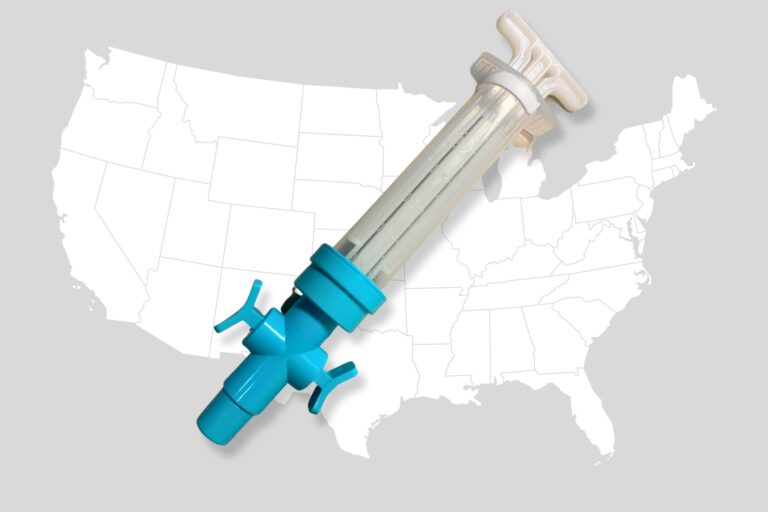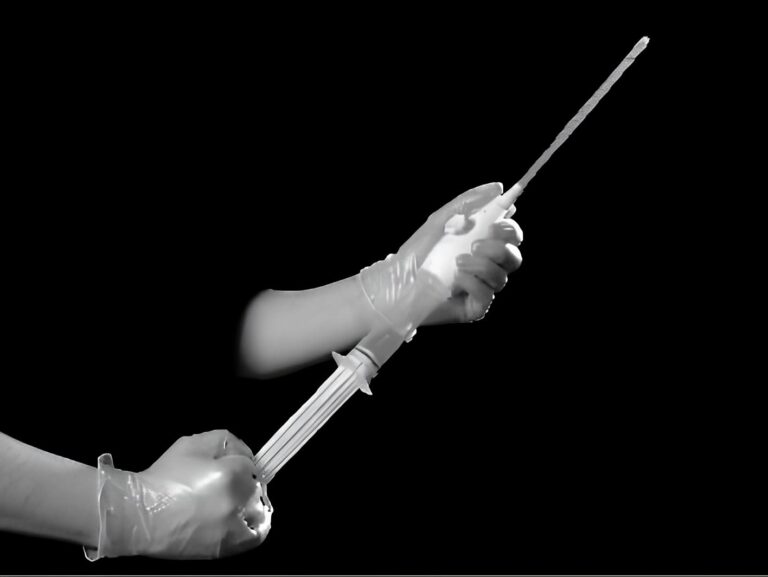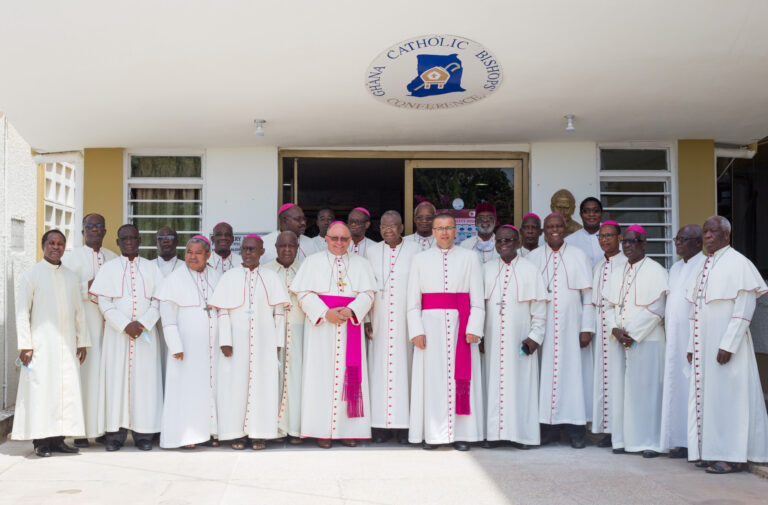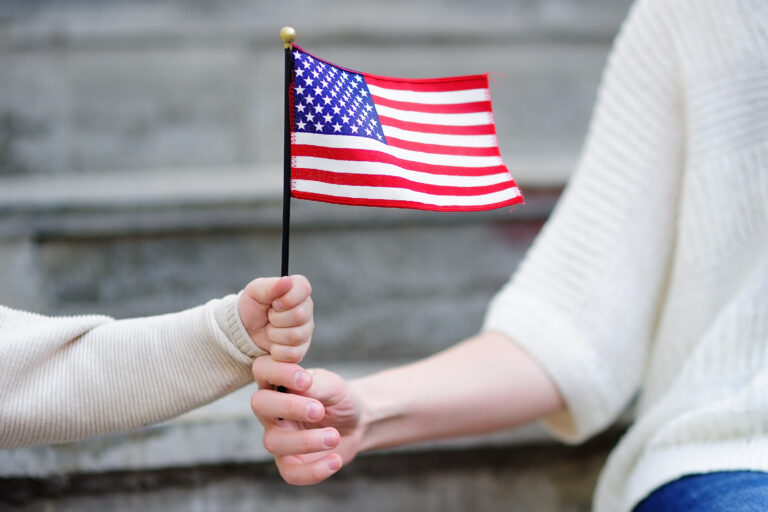The case of the Dalkon Shield
by James A. Miller
U.S. Government officials, A.H Robins executives and Pathfinder Fund administrators (among others) conspired in the early 1970’s to dump hundreds of thousands of dangerous, unsterilized contraceptive devices — unmarketable in the United States — into the developing world, according to a recent analysis of government and other documents. These devices were Dalkon Shields.
With the possible exception of Norplant, the Dalkon Shield intrauterine device (IUD) was arguably the worst contraceptive ever foisted upon American women. In just five years time following its January 1971 introduction into the United States, at least 18 Shield users died, several hundred suffered life-threatening septic abortions, and thousands more developed infections which often resulted in sterility.1
By the time the filing deadline for the class action lawsuit against Shield manufacturer A. H. Robins was reached, more than 161,000 American women had filed personal injury claims.2 Robins was forced to pay billions of dollars to those injured by the Shield and the company went bankrupt.
Most investigators believe that the actual number of those killed and injured was much higher, since not all those injured were properly recorded or, for one reason or another, they failed to file a claim. If the Dalkon Shield took such a toll in the United States, which has the finest medical services in the world, how many deaths and injuries did it cause in countries where medical care is often grossly inadequate?
The Dalkon Shield was dumped into the developing world by Robins with the aid of Dr. R. T. Ravenholt, the fanatical head of USAID’s Office of Population, who used USAID surrogates such as the International Planned Parenthood Federation (IPPF) and the Pathfinder Fund as conduits. With angry correspondence about Shield complications pouring into its corporate headquarters, with U.S. domestic sales declining, and with future prospects ever bleaker, the Robins company eagerly sought to expand exports of the Shield into foreign markets. Since USAID’s population office had a budget of $125 million to spend on the purchase and overseas distribution of contraceptives, and with Director Ravenholt a known population control enthusiast who would likely ask few questions about a cut-rate deal on Dalkon Shields. Robins naturally turned to USAID to boost its sales.3
Robins’ international marketing director wrote to USAID to interest it in placing “this fine product into population control programs and family planning clinics throughout the Third World.” The deal was sweetened with a special discount: the company offered USAID the Shield in bulk packages, unsterilized, at 48 percent off the standard price!
One of the greatest hazards associated with the use of any IUD is the possibility of introducing bacteria into the uterus. Accordingly, all IUDs sold in the United States come in individual, sterilized packages, with a sterile, disposable inserter for each device. The sale of non-sterile IUDs would be highly irregular in the United States, and would probably result in product liability suits.
Careful to preserve its image and to protect itself legally, Robins emphasized that USAID could not distribute the nonsterile Shields in the United States. A January 1973 Robins’ memo declared that the nonsterile form of Shields “is for the purpose of reducing price…[and] is intended for restricted sale to family planning/support organizations who will limit their distribution to those countries commonly referred to as ‘less developed.’”4 Robins expected practitioners in such countries to sterilize the Shields by the old-fashioned method of soaking them in a disinfectant solution, a procedure which, in the U.S., would border on malpractice. Moreover, Robins provided only one inserter for every 10 Shields, thus greatly increasing the possibility of infection.
Robins included only one set of instructions with every 1,000 Shields, and those were printed in just three languages, English, French and Spanish. Although the devices were destined for distribution in 42 countries, many of them Moslem and Asiatic, it is highly unlikely that they were read by more than a small number of people.
When USAID officials asked whether Dalkon Shields could be safely inserted by staff workers of remote family planning clinics, who would not have had the benefit of an American medical education, Robins replied that was no problem. This was not what the company had argued in the U.S., where it customarily countered reports of adverse medical reactions by blaming unqualified personnel, such as the occasional general practitioner, for inserting the device.
In a remarkable turnabout, Robins now produced a new study which “proved” that any paramedic could learn to insert a Dalkon Shield in half an hour.
Ravenholt approved the deal. Hundreds of shoe box-sized cardboard cartons, each filled with 1,000 unsterilized Dalkon Shields paid for by the U.S. Treasury, left the America’s shores bound for clinics in Paraguay, El Salvador, Thailand, Israel and 38 other countries. The big Dalkon dump was on.
Altogether, USAID purchased and shipped more than 700,000 Dalkon Shields for use in the Third World.5 Slightly more than half of the Shields went to IPPF. The rest were provided to the Pathfinder Fund, the Population Council, and Family Planning International Assistance, all of whom were major grant recipients of USAID.
Although records are sparse and incomplete, Pathfinder’s annual reports for fiscal years 1923 and 1994 disclose that it distributed at least 37,602 Dalkon Shield IUDs into the following countries:
1973: Indonesia (500), Kenya (5,000), Nigeria (1,000), Tunisia (5,200), Dominican Republic (4,000), El Salvador (2,000), Haiti (350), Jamaica (1,000), and Venezuela (5,000); 1974: Israel (500), Senegal (200), Indonesia (500), Tunisia (7,500), Mexico (1,152), Brazil (1,200), Chile (1,500), and Colombia (1,000).6
Substantial but unknown quantities of Shields were also shipped by Pathfinder to India, Paraguay, Egypt, Singapore, and Thailand. Indeed, in the case of Thailand, a USAID contract (PIN # 3012) to Pathfinder specifically funded the introduction of [the] Dalkon Shield into that country.7 The number of Dalkon Shields shipped overseas by Pathfinder, USAID’s number — two Shield customer after IPPF, is likely 200,000.
Besides the highly irregular and medically contraindicated mode of distributing unsterilized Shields, it is inconceivable that the Pathfinder Fund, a “leader in IUD evaluation and development, and an international clearinghouse for new IUD technology,” was unaware of the mounting evidence of serious complications involving the Dalkon Shield.
Even before Pathfinder and USAID began to ship the Shields overseas, and all during the distribution period, which continued for several months after the Shield had been withdrawn from the American market, Shield horror stories circulated widely.
It is inconceivable that Pathfinder (and USAID) could have been unaware of the damning articles about Dalkon Shield complications that had appeared in leading medical journals during 1973–74, or that they would have missed the devastating criticism of the Shield voiced at U.S. Congressional hearings in May/June 1973, which was widely reported by the media.8 The IUD, after all, was their baby.
Rabid population controllers are seldom concerned about the safety of the devices and drugs they promote around the world to curb fertility. After all, they argue, the risks of dying in childbirth in the Third World are so much greater than in the United States, that the use of almost any contraceptive is justified. In this case, however, one would have thought that the high pregnancy rates associated with the Shield would have given Pathfinder and company second thoughts. After all, while use of a particular contraceptive may be unsafe, it should not under any circumstances be ineffective.
Pathfinder and USAID were so unconcerned with IUD safety considerations that, in at least one instance, USAID actually financed a Pathfinder project which trained “nurses and midwives…to insert IUDs in their [clients’] homes.”9
Author Morton Mintz estimates that “Shield-related PID [pelvic inflammatory infection] killed hundreds, possibly thousands, of women outside of the United States.”10 If a Shield wearer in a Third World country, “where there are no doctors, no antibiotics [becomes infected], she’s going to die.” One can only guess at the number of such tragedies for which USAID and Pathfinder are responsible.
Can it happen again?
Since the Dalkon dump of the early 1970’s passed without notice, there is reason to be concerned that similar incidents could happen in the future, perhaps with Norplant.
At the height of Norplant’s popularity, immediately after its approval and before many of the horror stories about its complications began to circulate, American doctors were performing roughly 1,000 insertions per day, according to its manufacturer. Now that number has fallen to 60 per day. Will the manufacturer aggressively market the device overseas if the United States Food and Drug Administration accepts the Population Research Institute’s petition to withdraw Norplant’s approval for sale in the United States? For the sake of women across the developing world, we should keep careful watch.
USAID keeps Pathfinder going
By James A. Miller
The United States government contributes such a great percentage of Pathfinder Fund’s worldwide budget that it is doubtful the organization could continue to function without government help, a recent analysis of’ over twenty years of records revealed.
Before he died in 1966, Clarence Gamble, Pathfinder’s founder and first president, began a 75-country field study of the safety and effectiveness of the IUD. By the end of 1967 “the Pathfinder Fund had provided IUD assistance to… 628 doctors in 82 countries” who regularly provided records of their work. Pathfinder stored this mass of records on “71,910 first insertions of’ IUDs,” at its Boston headquarters, where they overflowed file cabinets and storage boxes. In the first six months of 1967 alone, the headquarters received records of 10,892 cases. The study “had reached an almost unmanageable size for [Pathfinder’s] limited staff.”11
The U.S. Agency for International Development (USAID) came to the rescue. Pathfinder was given $194,000 to continue its International IUD Study Program and analyze the resulting data. This, Pathfinder’s first U.S. government grant, is a relatively small sum when viewed by contemporary standards, but in the early 1960’s it was quite generous. To put this amount in perspective, Pathfinder’s entire 1965 budget amounted to only $250,000. In 1969, USAID gave Pathfinder the whopping sum of $1,289,000 for its IUD project.12
Because of USAID’s help, the “whole Pathfinder IUD operation [was placed] on a firmer footing.”13 Pathfinder hired the late Christopher Tietze, widely recognized for his work in the abortion and contraception industries, for the Population Council, to “elaborate the computer program” written by a Brown University mathematician to process the IUD data. Brown’s Sociological Computer Laboratory sold Pathfinder the needed computer time and soon thereafter Pathfinder issued a series of IUD Field Studies for a number of countries: Yugoslavia, Chile, and even Israel, among others.
USAID gushed approvingly, noting that since its initial grant to Pathfinder, the organization had “achieved leadership in the evaluation and development of new and improved intrauterine devices.”14 According to USAID, Pathfinder’s IUD program “surveys the world IUD scene, select[ing] IUDs with promising characteristics…facilitat[ing] rapid evolutionary improvement of IUDs.”15 USAID said that Pathfinder, through its “introduction and provision of IUDs beginning in 1963…ha[d] become an international clearinghouse tor new developments in IUD technology.”16
USAID’s timely infusion of funds not only saved the IUD project, it marked a momentous turning point. Never again would Pathfinder’s programs have to rely on the modest contributions of the Gamble family. Now, with funding from USAID, Pathfinder was elevated to the very top of the international population control community.
In short order, the initial USAID grants for Pathfinder’s IUD project were followed by others for worldwide “family planning services”: $700,000 in 1968 and $2.5 million in 1969, plus $250,000 more for Pathfinder Fund “activities… in a number of African countries.”17 Over the years USAID has poured nearly $300 million into Pathfinder’s coffers, USAID has funded more than 2,000 of Pathfinder’s population control programs in more than 60 nations.
Since the late sixties, Pathfinder has obtained some 90 percent of its income from USAID grants. In the most recent two years USAID funds accounted for more than 92 percent of Pathfinder’s total revenues.
It is doubtful that Pathfinder could survive without support from USAID. If its income were limited to what to what it could solicit from private sources, the organization would certainly shrink to a fraction of its current size and its operations would have to be cut back severely. As may be seen from the accompanying table, during the years 1992–1994 USAID funding of Pathfinder increased by $17,192,623; at the same time other Pathfinder funding sources increased by only $348,195. Indeed, in 1994, USAID grants to Pathfinder soared by $14,123,266 the largest yearly increment ever while at the same time non-governmental funding of Pathfinder actually declined by more than $400,000.
In fact, such a high percentage of its funds come from USAID on a regular annual basis that it is difficult to determine where USAID ends and Pathfinder begins. For all practical purposes Pathfinder has become an appendage of USAID and the U.S. government. It is quite likely that many foreign citizens and even some governments have come to regard Pathfinder as an agency of the U.S. government.
This recognition would, of course, undermine what is surely for USAID the most useful aspect of its relationship with Pathfinder. By using Pathfinder and other allegedly “independent” organizations as a front, USAID has been able put some distance between itself and many of the more objectionable elements of its population agenda. Thus has USAID disguised its involvement in sterilization programs, RU-486 research, Norplant trials and distribution, IUD insertions, and the circumvention of anti-abortion regulations imposed by the U.S. Congress.
Endnotes
1 Morton Mintz, At any Cost: Corporate Greed, Women, and the Dalkon Shield (New York: Pantheon, 1985), pp. 3–4.
2 Nicole Grant, The Selling of Contraception: The Dalkon Shield Case (Columbus: Ohio State Univ. Press, 1992), p. 44.
3 Dowie & Johnston, “A Case of Corporate Malpractice,” Mother Jones, November 1976, pp. 36–50, at 49; Ehrenreich, et al, “The Charge: Gynocide.” Mother Jones, November 1979, pp. 26–37, at 28; Hicks, Surviving the Dalkon Shield IUD, (New York: Teachers College Press, 1994), p. 51.
4 Ehrenreich, pp. 28–9.
5 Mintz puts the figure at “more than 697,000 Shields (p. 4), while author Grant gives a precise 708,568 (p. 43), and writers Dowie and Johnston, in their Mother Jones article, say the number was “769,000 Shields” (p. 49).
6 Annual Reports, The Pathfinder Fund, Fiscal Year 1973, pp. 65, 94, 95, 99, 100 and 101; Fiscal Year 1974, ppg. 17, 26, 69, 112, 121, 127, and 128.
7 Fiscal Year 1975/76 Population Program and Budget Submission, Bureau for Population and Humanitarian Assistance (USAID), September 1974, p. 202.
8 Three uterine perforation cases with the Dalkon Shield: “Perforation of the Uterus with a Shield Intrauterine Device,” Obstet. Gynecol. 41 (January 1973): 80–81; A death case: “Fatal Streptococcus Pyogenes Septicemia Associated With an Intrauterine Device [a Dalkon Shield],” Obstet. Gynecol. 41 (January 1973): 84, 86; High pregnancy rates among Shield users: “Puerperal Insertion of the Dalkon Shield,” Am. J. Obstet. Gynecol. 115 (Jan. 1973): 278–79; “Unacceptable pregnancy rates with Dalkon Shields,” Am. J. Obstet. Gynecol. 118 (January 1974): 186–9 (5.6 % pregnancy rate), and Obstet. Gynecol. 43 (March 1974): 443–6 (10.1 % pregnancy rate); 5 Deaths with Dalkon Shields: “Maternal deaths associated with an intrauterine device,” Am. J. Obstet. Gynecol. 119 (June 1974): 441–4; House Subcommittee of the Committee on Government Operations, Regulation of Medical Devices (Intrauterine Contraceptive Devices), 93d Cong., 1st session (Hearings: May 30, 31; June 1, 12, 13, 1973): pp. 306–24.
9 Fiscal Year 1974 Annual Report, The Pathfinder Fund, p. 64, emphasis added. Due to the sketchy information regarding this project, located in a suburb of Jakarta, Indonesia, it cannot be determined if any Dalkon Shields were involved. Regardless of what type(s) of IUDs were used, however, the delivery mode is unconscionable and potentially disastrous.
10 Mintz. p. 4–5.
11 R. P. Bernard, International IUD Programme C The Pathfinder Fund: Report 1967, The Pathfinder Fund, p. 1.
12 Population Program Assistance, Office of Population, USAID, October 1969, p. 16.
13 Bernard, op. cit., p. 3. The number of reporting doctors was reduced to a more manageable “cooperative network of 100 selected doctors in 40 countries” (p. 54).
14 IUD Performance Patterns, October 1969, Pathfinder Fund, p. 3.
15 Population Program Assistance, op. cit., p. 15.
16 Ibid, p. 54.
17 Ibid, pp. 31 and 44, respectively.










